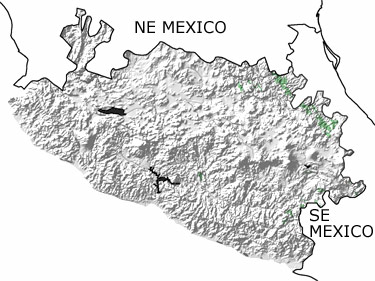Paleontology and geologyFor most of the Jurassic, the eastern part of the Southwestern Region was above sea level. The Gulf of Mexico was beginning to open to the east and shallow to deep seas extended to the west. Throughout the period, subduction in the west began to add deep-water sediments, slices of oceanic crust, and volcanic islands to the continent. This activity generated substantial volcanism, as huge blocks of granite were pushed up under older rocks and volcanoes erupted lava and ash across the surface. By the Late Jurassic, shallow seas flooded much of the east, transforming highlands into islands. The seas were filled with ammonites, crinoids, bivalves, echinoids, sponges, gastropods, and corals. Plants like cycadeoids and ferns grew in swamps, wetlands, and forests, which were home to crocodiles and theropod, ornithopod, and sauropod dinosaurs. |




